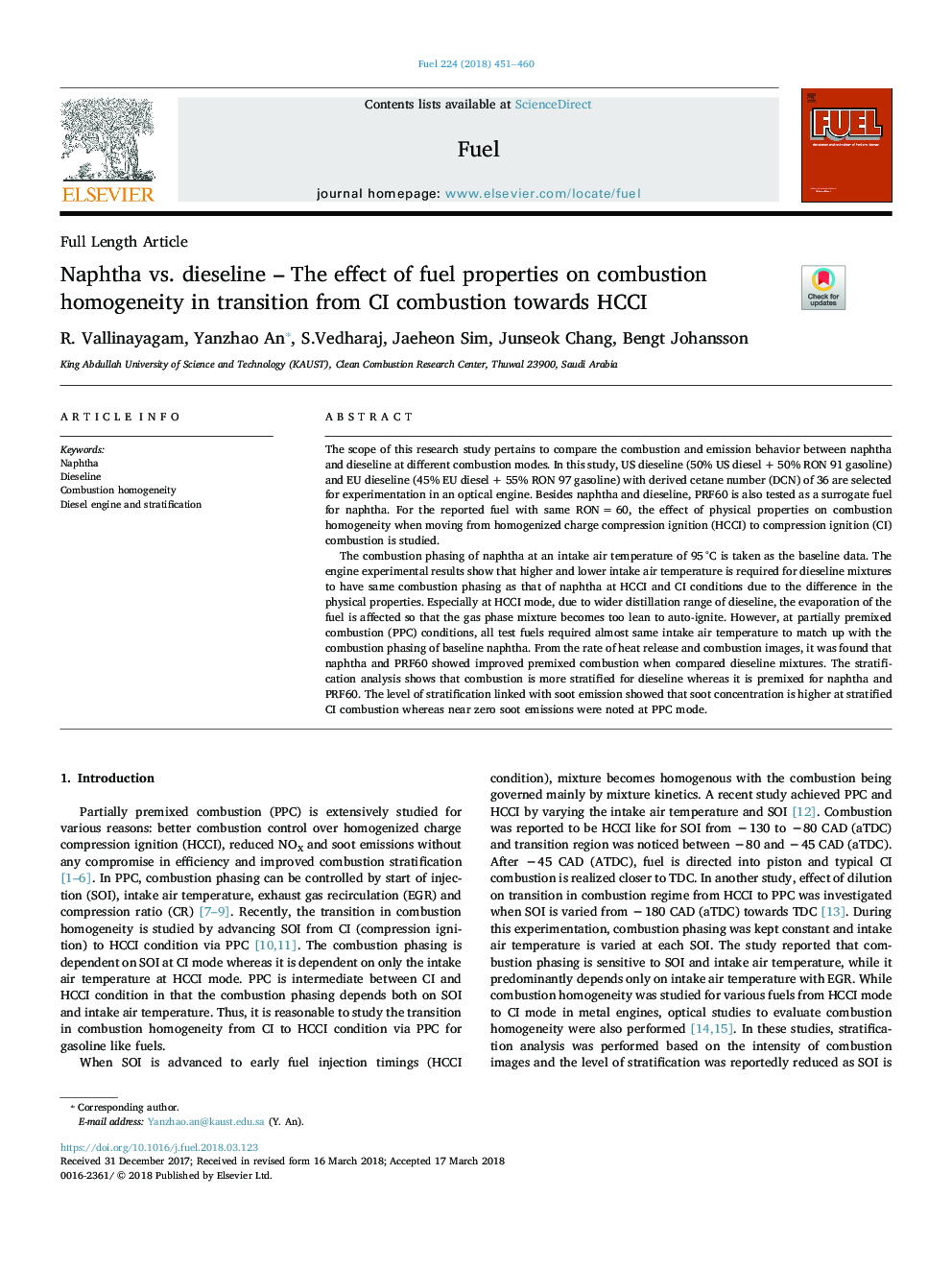| Article ID | Journal | Published Year | Pages | File Type |
|---|---|---|---|---|
| 6631175 | Fuel | 2018 | 10 Pages |
Abstract
The combustion phasing of naphtha at an intake air temperature of 95â¯Â°C is taken as the baseline data. The engine experimental results show that higher and lower intake air temperature is required for dieseline mixtures to have same combustion phasing as that of naphtha at HCCI and CI conditions due to the difference in the physical properties. Especially at HCCI mode, due to wider distillation range of dieseline, the evaporation of the fuel is affected so that the gas phase mixture becomes too lean to auto-ignite. However, at partially premixed combustion (PPC) conditions, all test fuels required almost same intake air temperature to match up with the combustion phasing of baseline naphtha. From the rate of heat release and combustion images, it was found that naphtha and PRF60 showed improved premixed combustion when compared dieseline mixtures. The stratification analysis shows that combustion is more stratified for dieseline whereas it is premixed for naphtha and PRF60. The level of stratification linked with soot emission showed that soot concentration is higher at stratified CI combustion whereas near zero soot emissions were noted at PPC mode.
Related Topics
Physical Sciences and Engineering
Chemical Engineering
Chemical Engineering (General)
Authors
R. Vallinayagam, Yanzhao An, S.Vedharaj S.Vedharaj, Jaeheon Sim, Junseok Chang, Bengt Johansson,
